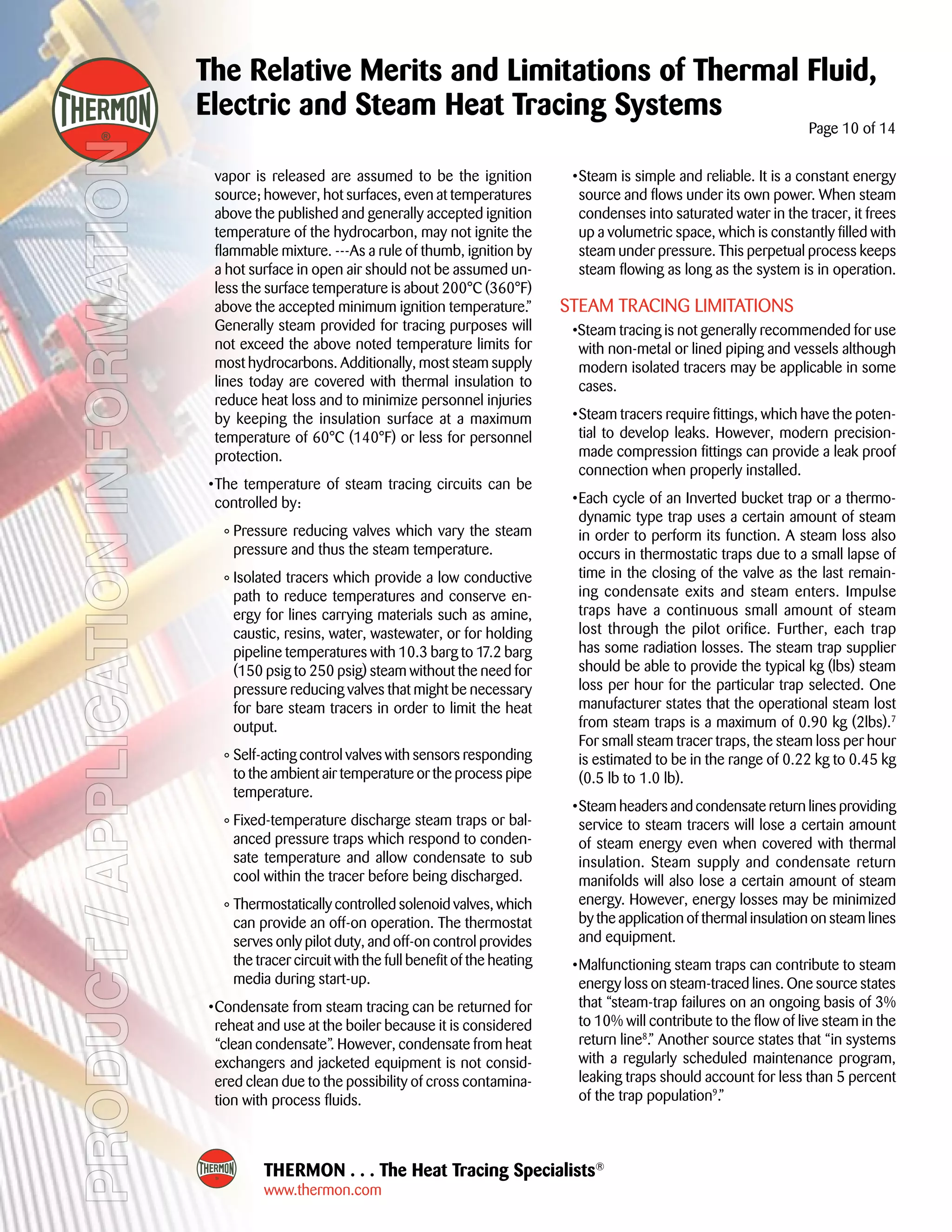This document provides an overview comparison of three common types of heat tracing systems: thermal fluid, electric, and steam. It discusses the history and evolution of each system type and highlights some of their key merits and limitations. The document emphasizes that no single system is definitively best for every application and that factors like specific process requirements, energy efficiency, installation costs, and maintenance should all be considered when selecting a heat tracing solution.













